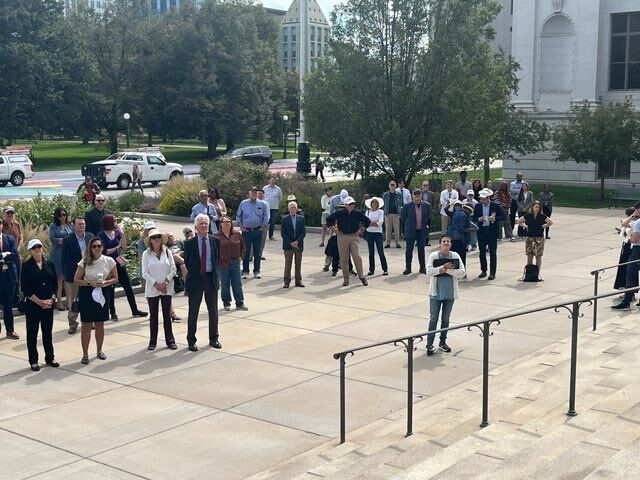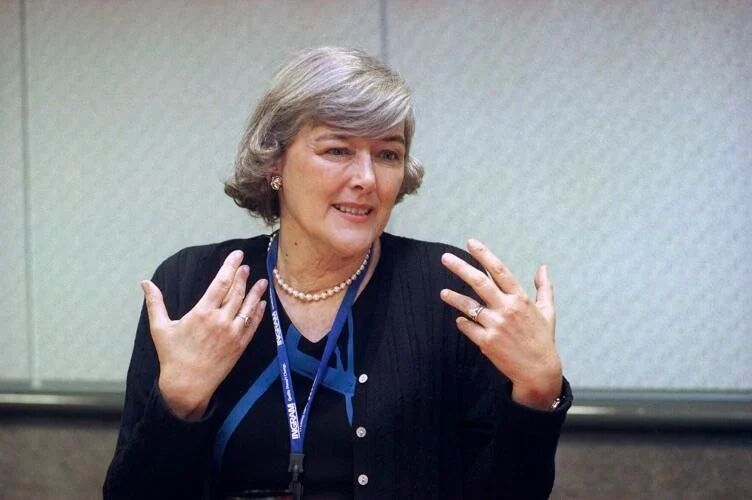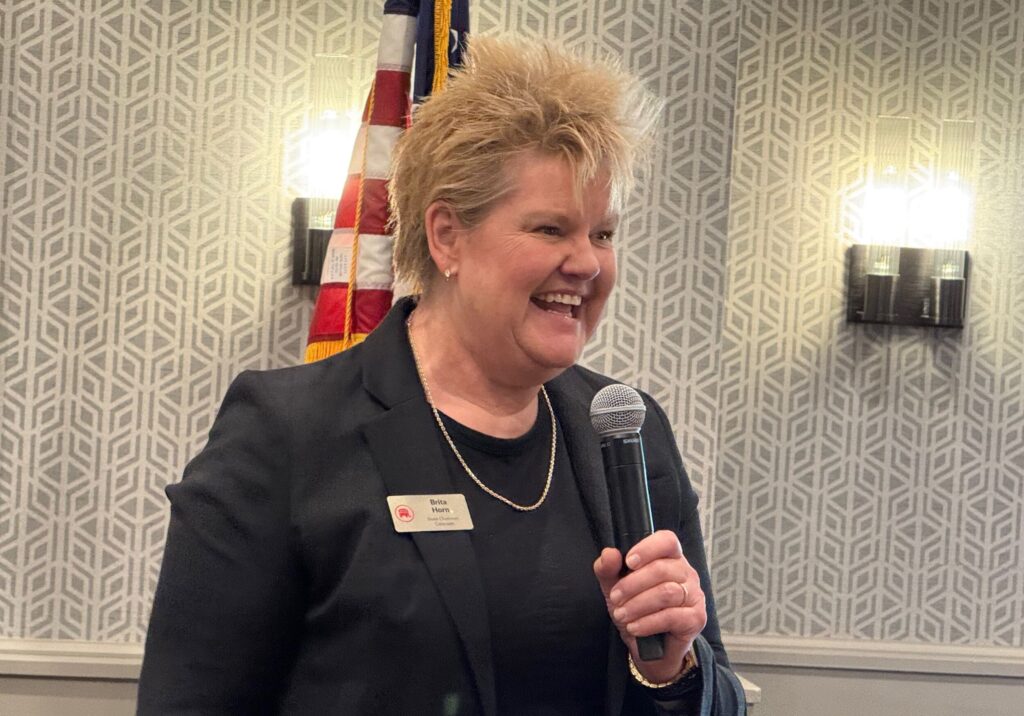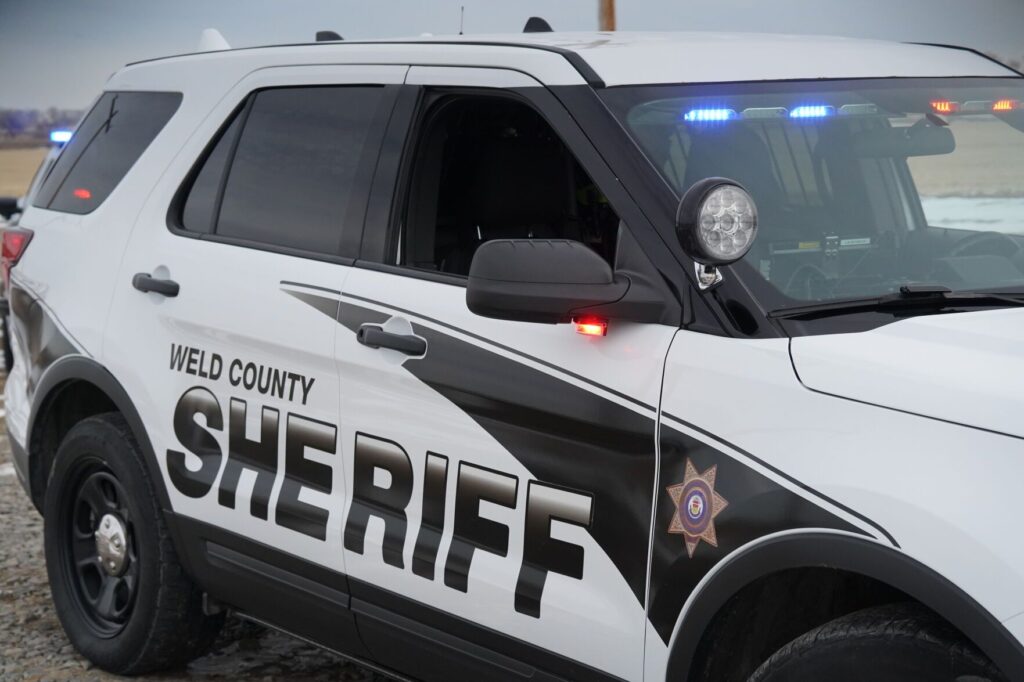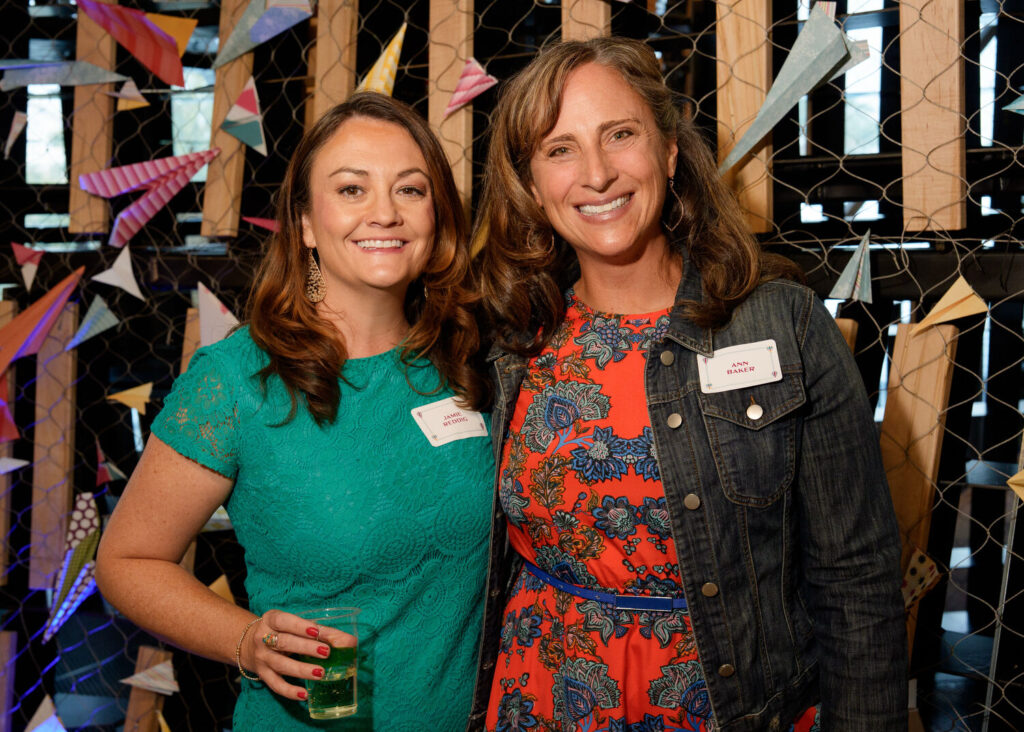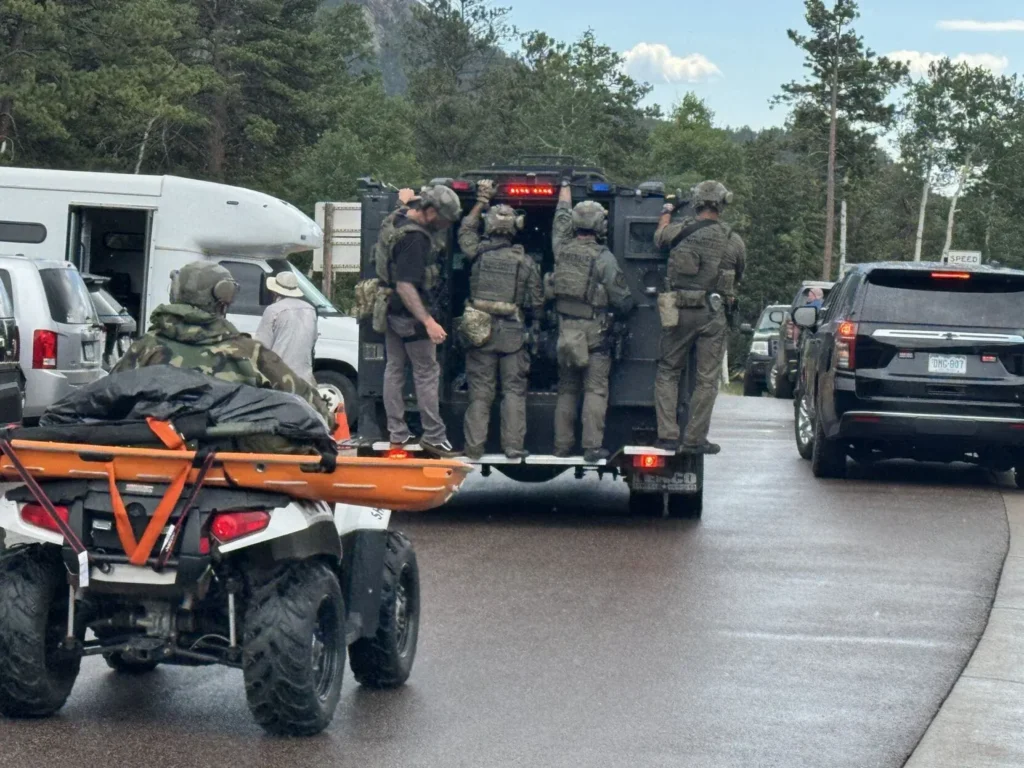Cloning: The latest in black-footed ferret recovery in Colorado and beyond
For years, Colorado Parks and Wildlife officers have driven out to the eastern plains in the middle of the night, a predator’s hunting hours, in hopes of spotting a pair of green, gleaming eyes.
Officers are expected to do just that sometime next year, out on a sweeping ranch near Lamar. This is where they recently released 17 black-footed ferrets in the latest attempt to boost the population of what’s been called North America’s rarest mammal.
As a Colorado Parks and Wildlife report plainly put it last month: “Black-footed ferrets are endangered and the work to restore them is hard.”
In Colorado, work began in 2001. Black-footed ferrets were reintroduced in the state’s northwest, only to die of plague like other released groups in the years to come.
For decades across the Great Plains, those late-night scouting trips have all too often ended with no sign of life — no sign of those little green eyes peeking out of burrows.

A black-footed ferret shyly explores the land outside of its new home inside of a prairie dog burrow on the May Ranch, Nov. 14, 2024, near Lamar, Colo. (Parker Seibold, The Gazette)
Those eyes are on the lookout for prairie dogs, the main prey of the slender carnivore native to the American West. Historic threats to that prey spelled the demise of the black-footed ferret: Westward expansion came with converting the prairie to agricultural fields and a government campaign to wipe out prairie dogs.
The black-footed ferret was long thought to be extinct. Then, in 1981, a Wyoming ranch dog named Shep happened upon one.
The discovery spurred scientists to action; they rushed to the ranch to retrieve 18 black-footed ferrets that quickly dwindled to seven. Those seven would be used for breeding the next generation, which would struggle one generation after another.
What’s next for historic Stratton Park? Two approaches up for consideration
This was the start of the multi-state, multi-agency mission to restore the black-footed ferret. And indeed it is a hard mission.
Despite vaccines and efforts to guard against predators such as coyotes and raptors, the species has struggled to regain native ground. The program that started out of Wyoming in the 1980s has reportedly bred more than 11,000 black-footed ferrets. Hundreds are thought to live in the wild today.
Small groups are released after going through the National Black-Footed Ferret Conservation Center in northern Colorado.

Lamar Middle School eighth-graders Ulises Lopez, left, and Roslyn Gonzales release one of 15 black-footed ferret kits at the May Ranch on Nov. 14 near Lamar. Each year Colorado Parks and Wildlife and U.S. Fish and Wildlife Service release ferrets on properties scattered throughout the West. Black-footed ferrets are one of the most endangered animals in North America. Colorado is one of eight states and more than 50 partner agencies involved with the recovery of the species through reintroduction.
“Sylvatic plague is our largest hurdle to recovery,” said the center’s Robyn Bortner. “It can take out entire sites, and it has.”
But now, perhaps, there’s hope beyond that sight of green eyes in the dark.
The recent news came like a page out of a sci-fi book.
Read the press release: “The U.S. Fish and Wildlife Service and conservation partners are excited to announce a groundbreaking achievement in endangered species research: the first-ever birth of black-footed ferrets produced by a cloned endangered animal.”
The cloned black-footed ferret, Antonia, produced two kits, a male and female, at the Smithsonian National Zoo and Conservation Biology Institute in Virginia. The organization’s senior curator, Paul Marinari, called it “a major milestone in endangered species conservation.”
A previous milestone was marked at the National Black-Footed Conservation Center outside Fort Collins. There in 2020, the first cloned black-footed ferret was born — North America’s first endangered animal cloned as part of a conservation program.

Elizabeth Ann was the first cloned black-footed ferret as part of the species’ recovery effort. She was born at a facility in northern Colorado. Photo courtesy U.S. Fish and Wildlife Service
Elizabeth Ann resides at the center still today, a couple of years after failed attempts to mate and produce kits of her own. While shy around visitors who come to admire her through a window, “she’s a very happy and healthy ferret,” Bortner said.
That the first clone remains such a draw is no surprise. “Her existence alone was amazing,” Bortner said. “But in order for (clones) to benefit the population, they need to reproduce so we can incorporate their genetics in the larger population.”
This was the upshot of the cloning idea, using cells that had been cryopreserved for 35 years: to expand the species’ genetic diversity, from one generation to the next.
Other than Elizabeth Ann, Antonia, a third clone named Noreen and now Antonia’s offspring, the hundreds of black-footed ferrets living today all descend from those seven “founders” retrieved from that Wyoming ranch in the ‘80s. This narrow genetic pool has worried biologists.
Biologists know the perils of “genetic bottlenecks:” deformities and limits to fertility and adaptability — adaptability to stand against, say, disease and a changing environment.
“It comes down to, would you want to marry your first cousin?” said Ben Novak, lead scientist for Revive and Restore.

U.S. Fish and Wildlife Service recently announced Antonia was the first cloned black-footed ferret to reproduce as part of the endangered species’ recovery effort. Photo courtesy U.S. Fish and Wildlife Service
The California-based nonprofit has coordinated the cloning initiative, guiding partners with Fish and Wildlife and ViaGen Pets. The Texas-based company recreated people’s dogs, cats and farm animals before black-footed ferrets.
“It was a neat project,” said ViaGen’s chief science officer, Shawn Walker. “I mean, how often do you get the federal government to step up and do something like this?”
It was a government representative, Fish and Wildlife’s Seth Willey, who inquired in the first place. Read the subject line of his email sent to Revive and Restore: “Out of the box.”
Feedback sought for ‘place of awe and wonder’ in Castle Rock
In 2013, Willey had sat in on Revive and Restore’s TEDx talk that explored bold possibilities of de-extinction through biotechnology.
“Basically he said, ‘If you guys are contemplating bringing back extinct species, there has to be some way you can help black-footed ferrets,’” Novak recalled.
Novak reached out to his contact at San Diego’s Frozen Zoo, which preserves a vast collection of animal genetic material in tanks of liquid nitrogen.
Was there anything from black-footed ferrets? Novak asked one of the zookeepers.
“And he got really excited. He said, ‘Yeah, we’ve got these two cell lines!’”
One belonged to a black-footed ferret named Willa, among the larger group of 18 retrieved from Wyoming in the ‘80s. Long before Dolly the sheep, biologists “had the foresight to bank that tissue,” Bortner said, amazed.
Willa was missing from today’s black-footed ferret gene pool that came down to the seven “founders.” And Novak saw the potential: “The first time in history that people have been able to reach back in time and revive a new founder for a breeding program like this.”

Staff with the U.S. Fish and Wildlife Service and Colorado Parks and Wildlife organize carriers containing black-footed ferrets to be released on the May Ranch on Nov. 14.
For longtime conservationists gathered at a meeting in 2014, Novak needed to do some convincing. “We were the new kids on the block. We were met with skepticism.”
Years of more research, testing and development did the convincing. There was another another long process for an unprecedented federal permit. In 2020, ViaGen got the go-ahead. And thus launched the process of somatic cell nuclear transfer.
Willa’s genetic material was injected into an egg to be carried by a domestic ferret. The domestic ferret would serve as the clone’s surrogate mother.
“Because of our limited breeding stock of black-footed ferrets, it would have been difficult for us to spare any females from our breeding program,” Bortner said.
Jim Bishop’s castle: A towering legacy forged through sickness and tragedy
Following a tense cross-country drive to bring the surrogate mother to the national conservation center in Colorado — “very precious cargo,” Bortner said — round-the-clock watches upon arrival and a nerve wracking C-section, Elizabeth Ann was born. Then followed more tense days and weeks of watching her grow to good health.
“We were always a little bit nervous,” Bortner said. “This was probably the most important animal that’s been here, maybe except for the very first in the ‘80s.”
And maybe even more important: the first kits of a clone recently announced.
The news garnered international response, including from the director of the Ethics Institute at Boston’s Northeastern University. In an interview with the school’s Northeastern Global News, Ronald Sandler noted the kits remaining inside a facility for further research, with no plans for the wild.

A newly released black-footed ferret curiously pops out of its new home inside of a prairie dog burrow on the May Ranch, Nov. 14, 2024, near Lamar, Colo. (Parker Seibold, The Gazette)
“Maybe their populations could be rebuilt, and that would be very interesting and scientifically amazing,” Sandler said, “but it’s not real conservation unless you also protect their habitat and you’re able to put them back into that habitat. Otherwise it’s just kind of a curiosity; it’s like a sideshow or they’re just in a zoo.”
On the topic of black-footed ferret cloning, another publication, High Country News, previously quoted a memorable “Jurassic Park” character: “Your scientists were so preoccupied with whether or not they could, they didn’t stop to think if they should.”
Critics have asked: Is it really a black-footed ferret if it’s birthed by a domestic ferret? By DNA involved in somatic cell nuclear transfer, “what we’re looking at is 99.9999% black-footed ferret,” Novak said.
And the clones sure act like skittish black-footed ferrets more than curious domestic ferrets, Bortner said. The chance at increasing genetic diversity was “an advantage that couldn’t be overlooked,” she said, while recognizing there was more to learn.
She recognized concerns, echoing Fish and Wildlife’s recent announcement: “While this technology represents a promising new approach, it is one of many strategies being employed to aid species recovery.”
Efforts to restore habitat and combat disease would continue, the agency said. Releases into the wild would continue, along with those late-night searches for signs of hope: little green eyes glowing in the dark.


